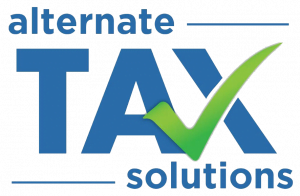R&D Tax Credit Solutions
What is the R&D Credit?
The R&D Tax Credit is one of the most beneficial sections of the tax code. It allows for a dollar-for-dollar tax credit for any company engaged in qualified research activities. The definition of qualified research has been continually expanded in recent years, thus allowing companies from a variety of industries to obtain the benefit. These credits can be used to offset income tax or payroll taxes in certain circumstances.
What Activities Qualify?
There are numerous sections of the tax code and lengthy U.S. Tax Court rulings defining which activities qualify as R&D and which do not. Companies performing the following types of activities usually qualify:
- Architecture or Engineering services
- Software development & testing
- Product development and testing
- Process development or improvement
- Custom manufacturing
- Industrial engineering
- SBIR/STTR R&D
- Systematic trial and error
- Developing models or simulations
These types of activities and more are an indicator that the R&D Credit may benefit your company.
What Expenses Qualify?
If a company can show that it meets the four-part test, it can claim the following expenses towards the credit:
- Wages
- Subcontractor/consultant expenses
- Supplies and materials used in R&D
- Cloud service provider costs associated with development and test server space
Any expense claimed toward the credit must be eligible for treatment as an expense under Section 174 of the tax code. In other words, no items that are depreciated for tax purposes can be claimed.
- Aggregates & Mining
- Analytics & AI
- Architecture
- Biotechnology & Pharmaceutical
- Brewing/Distilling
- Construction Services
- Green Technologies
- Machine Shops
- Manufacturing
- Manufacturing System Integration
- Software Development
What Are the Benefits?
In general, for every dollar of qualified research expenditure, a company will receive between 8 and 10 cents of tax credits. These tax credits directly offset any taxes owed. For pass-through entities, the tax credits flow directly to the owner’s tax returns. Taxpayers can also amend tax returns for the previous three open years to claim the credit and obtain a treasury refund. For qualified start-up companies, these tax credits can be used to offset the employer portion of payroll taxes owed.
Since 2009, both Congress and the Tax Courts have taken measures to make the R&D Credit available to a broader range of businesses. As a result, many companies that previously thought they might not qualify have tapped into this incentive on the federal and state levels.
What Can I Do to Claim These Credits?
Alternate Tax Solutions leverages the expertise of its CPAs, subject-matter experts, and tax professionals to develop comprehensive research and development studies and to prepare the necessary tax forms. These studies are designed to capture as many R&D expenses as possible and to ensure that claims adhere to all of the standards laid out by the IRS.
Access our R&D Credit Estimator to find out more.

